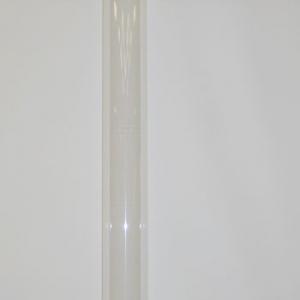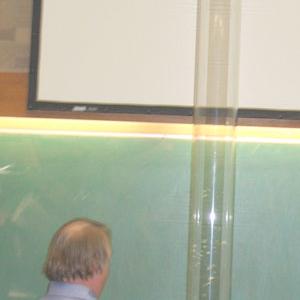College of Liberal Arts & Sciences
4B20.30 - Thermal Convection of a Gas - Convection Chimney with Confetti
Place the Plexiglas tube into the metal stand. Insert the Fischer burner into the opening in the metal stand and center. Light the burner and throw some confetti into the lower end of the tube. The confetti will rise in the tube and eventually come out the top and fall like snow over the table that the tube is placed on.
NOTE: The confetti will not catch on fire. It will rise above the flame and out of the heat before it can do so.
- Janice VanCleave, "25, Smoking Chimney", Teaching the Fun of Physics, p. 41.
- Julien Clinton Sprott, Physics Demonstrations, "2.13, Heat Convection", p. 98, ISBN 0-299-21580-6.
- Charles Vivian, "The Candle at the Door", Science Experiments & Amusements For Children, p. 16.
- Charles Vivian, "Make Smoke Obey", Science Experiments & Amusements For Children, p. 10.
- Curt Suplee, "Heat and weather", Everyday Science Explained, National Geographic, p. 70.
- John Henry Pepper, Henry George Hine, "The Convection of Heat", The boy's playbook of science, p. 383.
Disclaimer: These demonstrations are provided only for illustrative use by persons affiliated with The University of Iowa and only under the direction of a trained instructor or physicist. The University of Iowa is not responsible for demonstrations performed by those using their own equipment or who choose to use this reference material for their own purpose. The demonstrations included here are within the public domain and can be found in materials contained in libraries, bookstores, and through electronic sources. Performing all or any portion of any of these demonstrations, with or without revisions not depicted here entails inherent risks. These risks include, without limitation, bodily injury (and possibly death), including risks to health that may be temporary or permanent and that may exacerbate a pre-existing medical condition; and property loss or damage. Anyone performing any part of these demonstrations, even with revisions, knowingly and voluntarily assumes all risks associated with them.


